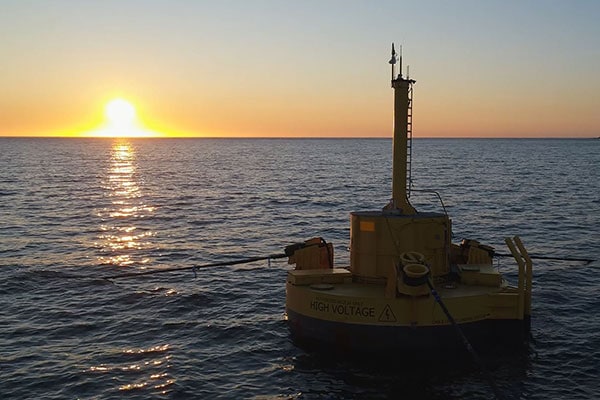WHERE DOES CO2 FREE HYDROGEN GAS COME FROM?
It’s no longer a question whether hydrogen will have a major impact on the automotive industry, but rather an accepted fact that it will. Volvo’s and Daimler’s recent announcement (read here) of joint efforts in developing and manufacturing fuel cells is the latest sign of the importance of hydrogen for energy storage.
But how is hydrogen produced, where does the gas come from, and what environmental impact will this production entail? After all, it is pointless to produce hydrogen using energy that will leave an environmental footprint. Not to mention, the fresh water needed for hydrogen production is already a scarce commodity in many countries around the world. So, where is the solution?
Rebuild and do right
The offshore oil and gas industry have left clear footprints throughout the world. In many cases, the tracks are far from land, but they are still there. When oil wells run dry, offshore platforms become obsolete and must be successively decommissioned, their sites fully removed. But there is a new and better alternative to this full decommissioning in the form of hydrogen factories.
Waves4Power offers a solution by converting the energy of ocean waves into electricity. This results in clean electricity without CO2 emissions. The company, together with its international partners Siemens and Parker, have developed a system for offshore hydrogen production. They’ve dubbed it the Green Power Eco System from Waves4Power.
Offshore production provides twice the environmental benefits
Do not decommission the obsolete offshore platforms – convert them to hydrogen factories. One can successfully utilize the infrastructure previously used for offshore storage of oil and natural gas as an avenue to store hydrogen gas. This conversion results in lower overall cost, while offering an environmentally responsible solution.
The energy and raw material required for hydrogen production is already available in the ocean, the very element that surrounds the existing platforms. Existing environmental permits for oil recovery allow a quick and easy upgrade to hydrogen production. The produced hydrogen can be stored and then distributed via tanker vessels or existing pipelines to shore. The onshore distribution of hydrogen may be feasible through a network of flexible and inexpensive polyethylene piping systems.
It is worth noting that this upgrade from fossil fuel production to green energy via hydrogen production provides double the environmental benefits. Since both water and energy required for hydrogen production come directly from the sea, the process offers virtually zero footprint. Clean water is the only residual product.
Wave power works
Waves4Power has shown that electricity can successfully be generated from ocean waves and that their buoy-based system survives in the ocean even under very rough conditions. A week after the company launched its WaveEL system at Runde island, off the coast of Norway, the buoy was exposed to 14-meter waves. The system met this challenge without problem, remaining on site in the ocean for another 12,000 hours.
The company is now taking on the challenge of becoming part of the world’s future smart-energy system based on hydrogen. Together with its strong industrial partners, Waves4Power is well on its way to achieving this goal.
For more information contact Jonas Kamf, CEO of Waves4Power.
jonas.kamf@waves4power.com +46 706 64 36 25
www.waves4power.com

